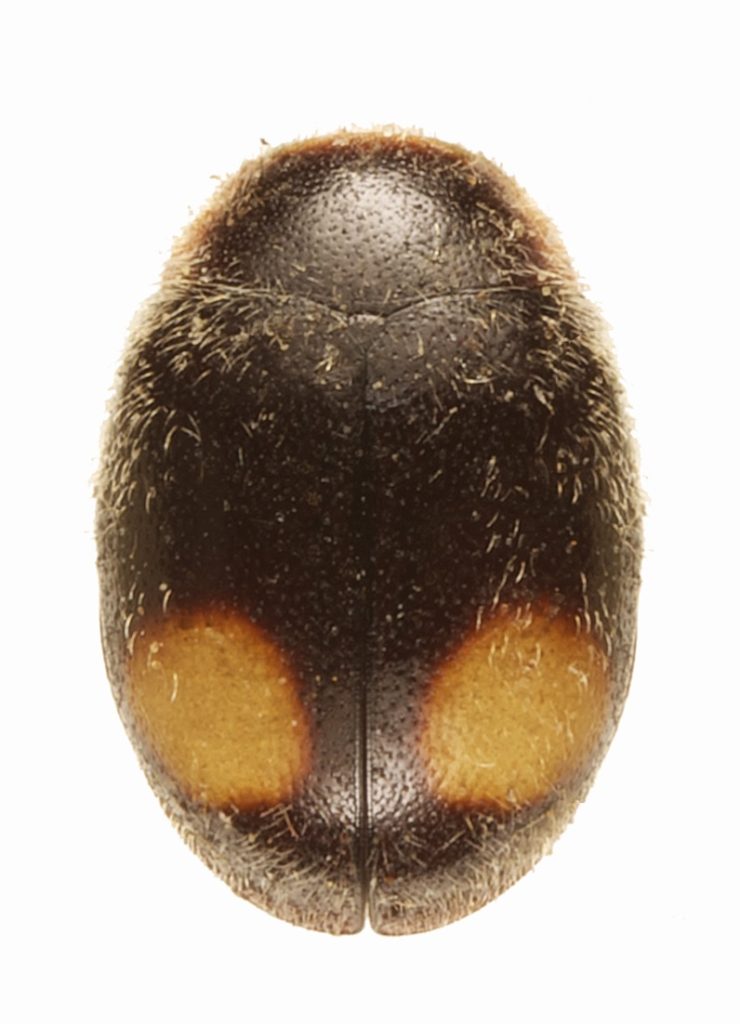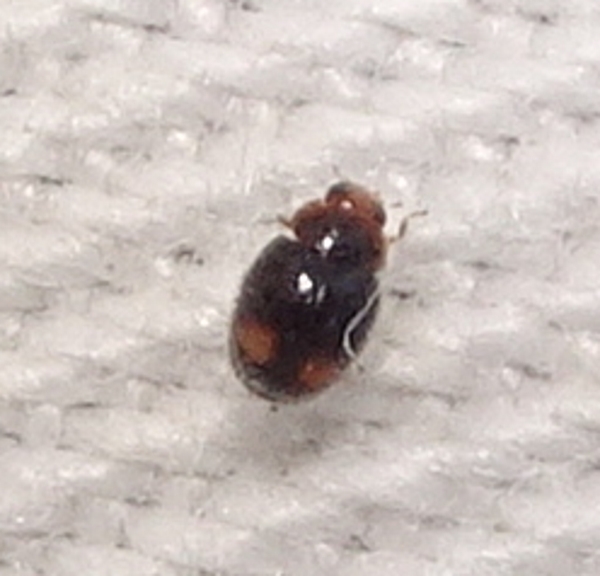
Nephus flavifrons © Guy Hanley

Nephus flavifrons © Russell Pfau
The Tiny Lady Beetle is native to North America. It is also known as the Yellow-fronted Lady Beetle. Its wing covers are black with one red spot on each towards its back end.
Status
Native
The Tiny Lady Beetle has not been ranked in the United States or in Canada.
Last Seen
2014
Fun Fact
Tiny Lady Beetles have two red spots on their wing covers almost everywhere in the U.S., except southern Texas — Tiny Lady Beetles there have two yellow spots. A Tiny Lady Beetle was found in a peat bog in Cape Breton, Canada from 12,300 years BP, they are no longer found in this region!
Identification
The Tiny Lady Beetle is between 1.5 and 2 mm in length.
- Head: Orangish-brown or black in color.
- Pronotum: Black, with an orangish-brown margin along the front and sides. The pronotum can also be entirely black.
- Elytra: Black, with two large, oval-shaped, yellow (only in the southern Texas populations) or orangish-red spots on the posterior end (one per elytron). Spots variable in size and color.
- Legs: Yellowish-orange to brown.
- The beetle is covered in pale hairs.
- Often confused with: Pine Dusky Lady Beetles, Bigeminate Sigil Lady Beetle, Hyperaspis binotata, Scymnus fraternus.
Habitat
Arboreal. Can also be found in agricultural crops.
General Range
Texas to Nebraska, east to the coast, south to Florida, and north to southern Quebec.
Food
Likely aphids and other soft-bodied insects.
Life History
Can be found from April to October. Little is known about the life history of the Tiny Lady Beetle.
More Information
You can find more information about Tiny Lady Beetles using the following links:
Vermont Distribution
Visit the iNaturalist Observation Map (no Occurrence Records yet) to find out where Tiny Lady Beetles have been seen in Vermont.







